No one embodies this spirit of nature more than Donald (Don) Inman, Ph.D., CAS ’66.
“Ecology has given me a real true appreciation for the world we live in,” Inman says. “Look at how many fascinating, wonderful things there are in this world. It still enchants me today.”
Inman has a long history of environmental advocacy: He studied biology and wildlife ecology in college. He devoted his career to protecting Michigan public lands. He created and chaired conservation organizations. And, most notably, sparked an idea that would preserve and restore countless acres of land throughout the state.
Mapping the trail
Inman grew up learning to love and appreciate all living things. At the age of 10, he would ride around on his bicycle, bird book in hand, discovering different species in his hometown of Muskegon. His parents had an affinity for the outdoors, both hunters who honored the land and resources Earth provided them. Inman was enthralled with the creatures that he shared the planet with; a fascination that blossomed into a love for biology. He came to Oakland University on a General Motors scholarship in the hopes of fostering this passion, but the young university had yet to establish a biology program. Inman opted for the next best thing — a chemistry major with a minor in biology.
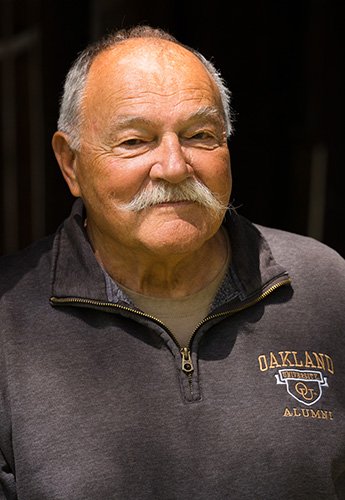 |
| Donald (Don) Inman |
“I grew up hunting, and so I actually kept my shotgun in my dorm room,” Inman recalls. “On Saturday mornings, I walked across campus with that gun in a case and went hunting squirrels and rabbits on the Dodge property.”
“It was a really good university in just a nice small town atmosphere,” he continues. “They had some really unique people and professors.”
One of Inman’s favorite professors was Fred Obear, who joined OU in 1960 as an assistant professor and eventually served as dean of freshmen, vice provost and provost at Oakland University. “He was always laughing and just loved his students,” says Inman.
After OU, Inman transferred to Michigan State University, seeking to combine his degree in chemistry with his passion for biology. But, the lab coats and microscopes found in biochemistry made him feel too disconnected to the tangibility of nature, so he switched to a major in wildlife ecology in the Fish and Wildlife Department at MSU. Graduating with his Ph.D. in ’71, Inman continued to expand his education by becoming a postdoctoral researcher (postdoc) at the Institute of Ecology at the University of Georgia, studying under famous ecologist Eugene Odum, Ph.D.
Odum spent most of his professional career at the University of Georgia and was a leader in studying nature in terms of ecosystems. According to a New York Times article from 2002, “Odum is widely considered the father of modern ecology, who founded and for many years directed one of the world’s largest outdoor scientific preserves.”
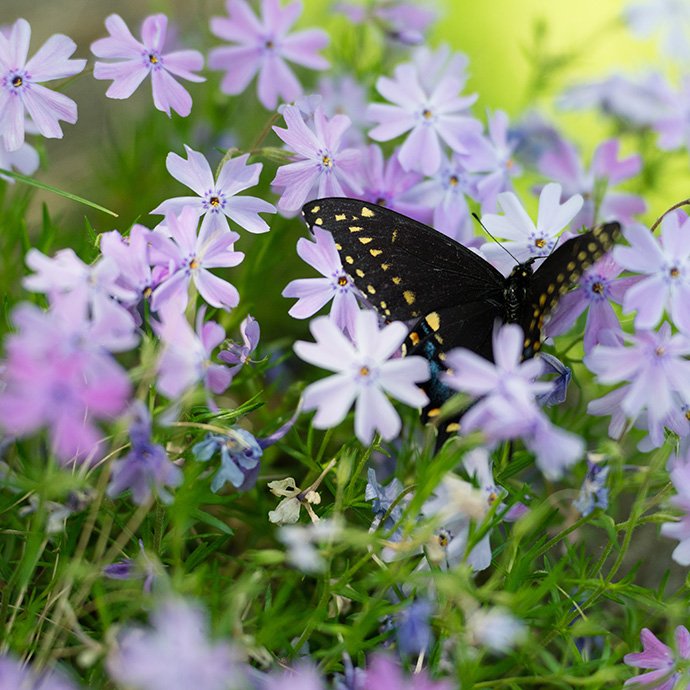 |
| A swallowtail butterfly outside Inman's home in Presque Isle County, Michigan |
“I really learned a lot about ecology from Odum,’” Inman says. “He really got me interested in not just wildlife management, but wildlife ecology and the connectedness of animals to their environment and plants.”
Shortly after completing his postdoc, Inman began working as a biologist for the Office of Environmental Review with the Department of Natural Resources (DNR), writing and reviewing environmental impact statements. He eventually found his way into the Environmental Enforcement Division, where he examined pollution impacts through a legal lens. Throughout every aspect of Inman’s 26-year career with the DNR, he continued to search and rectify the connection between humans and the environment.
“In my downtime, I think about what a really good life I’ve had, how much I’ve done and how much I appreciate the world. I feel like I had a life worth living.”
Don Inman

Robert Hall
“In my downtime, I think about what a really good life I’ve had, how much I’ve done and how much I appreciate the world. I feel like I had a life worth living.”
Don Inman

Robert Hall
Igniting the spark
In 1974, the Pigeon River Country State Forest in Vanderbilt, Michigan, was leased for oil and gas drilling. As such, Inman’s team was commissioned to establish an economic and environmental impact statement. The community was torn between the effect this would have on the environment and the income the proposed drilling would bring to Michigan. A young Inman came up with a solution: in order to mitigate the damages caused by the drilling, the state could use a percentage of the revenue to preserve recreational lands.
“It was Don who first came up with the idea to assure that revenues from the use of publicly owned non-renewable resources — oil and gas — would be invested back into non-renewable resources — land — for the perpetual use of the Michigan public,” says Bill Rustem, member of former Michigan Governor William Milliken’s staff (1970-82) and longtime friend of Inman.
“I might have started the spark, but there were a lot of people involved with moving it forward,” Inman humbly remarks. “Bill was one of them.”
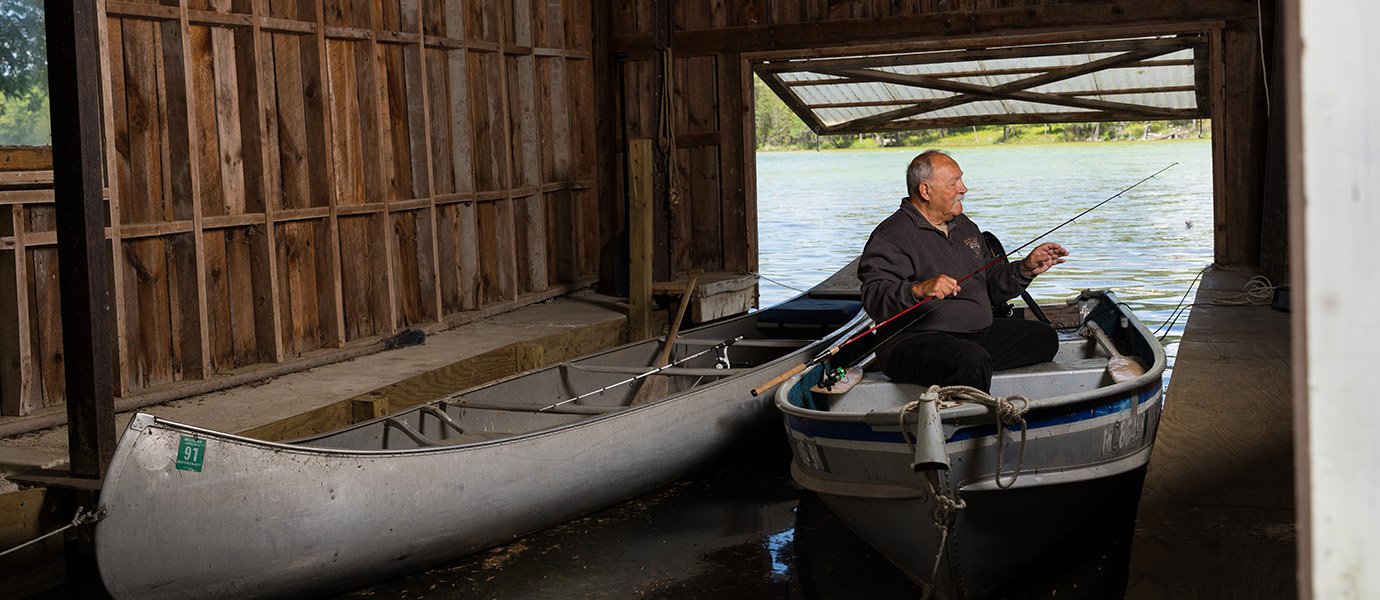 |
| In his free time, Inman enjoys fishing and hunting |
The Michigan Natural Resources Trust Fund (MNRTF) was signed into legislation in 1976. During that time, Rustem was an executive assistant to the governor and part of his portfolio was conservation and environmental policy. “I worked with the DNR and the legislature in getting what was the Kammer Recreation Trust Fund bill (the first iteration of the MNRTF) passed by the legislature. State Senator Kerry Kammer of Pontiac was the sponsor of the bill.”
During that time, Rustem and Inman found a common love of nature and became fast friends. “Don and I have always shared abiding interests in hunting and fishing, which meant that we cared deeply about the woods and waters of Michigan and the flora and fauna that help define the state,” Rustem says. “We also were both passionate about ensuring public access to those resources for both the present and future generations.”
To date, the fund has awarded more than $1.2 billion back into Michigan lands. The MNRTF has contributed funds to every county in Michigan to acquire land, improve public outdoor recreation and strengthen the economy of local communities. In Oakland County alone, 175 projects have been funded by the MNRTF.
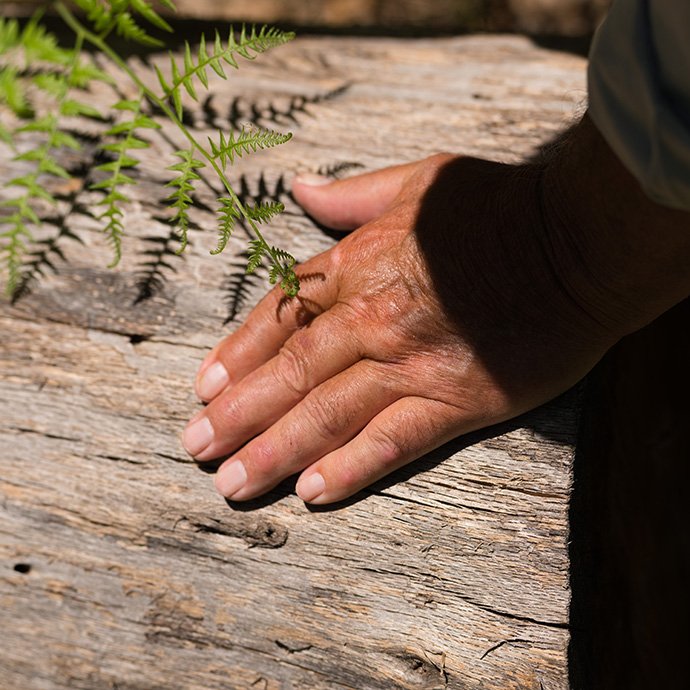 |
| Inman's appreciation for nature is evident in his lifelong career and continued endeavors in wildlife conservation |
According to the 2021 MNRTF annual report, throughout Michigan “about $279 million has been invested in trails. In excess of 1,000 public parks have been acquired, developed or both. Other projects funded include ball fields, boat launches, trailheads, restrooms and other amenities, for a total of 2,715 Trust Fund-assisted projects since 1976.”
“I think a lot about how far the fund has come. I’m very proud,” Inman says, with tears in his eyes. “The state has stood up to many attacks on that particular piece of legislation to try to earmark some of those funds for other purposes. So, I am happy that it passed and continues to hold firm today. It’s a legacy for Michigan.”
Preserving the legacy
After retiring from the DNR as deputy director of the lower peninsula in 1997, Inman and his wife, Virginia Pierce, a fellow DNR employee, settled down on a 500- acre plot of wild, undeveloped land in Northern Michigan.
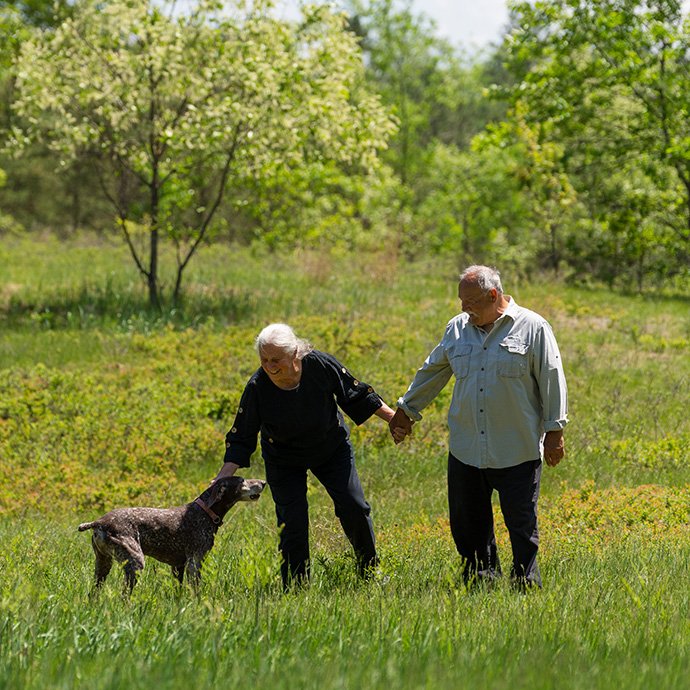 |
| Inman and his wife, Virginia Pierce, stroll through their fields with canine companion, Mr. Wood |
But, retirement did not stop them from continuing their conservation work. Inman and Pierce started the Michigan Resource Stewards, a conservation organization composed of naturalists and scientists that work to influence decision makers in conservation and environmental policy, and became Michigan environmental consultants. Inman briefly became a chairperson for the Headwaters Land Conservancy, an organization that seeks to protect the waters and land of Northeastern Michigan, and where Pierce still holds a position on the board today. The two have also spent the past 25 years traveling the world, exploring several countries in Africa, along with Central and South America; Galapagos Islands off the coast of Ecuador; Hong Kong, China; Havana, Cuba; and many more countries and cultures throughout the world.
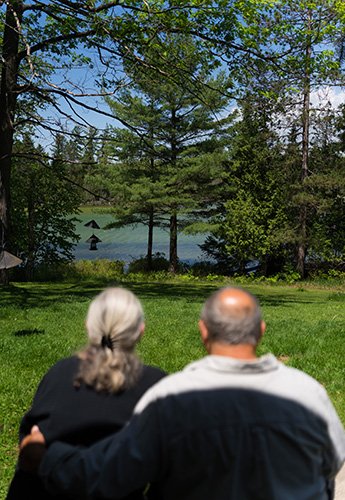 |
| Inman and Pierce's favorite spot: sitting on their back porch looking out over Kelsey Lake and enjoying the natural world around them |
“Don believes deeply in conservation,” says Pierce. “I am extremely proud of his significant contribution in the creation of Michigan’s land trust fund. The passage and implementation of the trust fund has had a real life effect on Michigan’s outdoor recreation offerings.”
With their home that overlooks Kelsey Lake, surrounded by lush forests, Inman and Pierce now spend most of their time watching the plethora of wildlife in their backyard, hunting, fishing off their dock, and enjoying friends and family.
“What I love about our home is its setting,” explains Pierce. “It sits on a 40-acre lake with nearly 500 acres of woods and marshes and all the living wildlife that inhabits those places. I love being able to sit on the porch and watch the lake and the birds, with a cup of coffee in the morning or a glass of wine in the evening.”
“In my downtime, I think about what a really good life I’ve had, how much I’ve done and how much I appreciate the world,” says Inman. “I feel like I had a life worth living.”
While Inman has a slower stride these days, his legacy continues to build momentum. From the recreational lands that are still being funded through the MNRTF to his impact on local communities and the many lives he has affected throughout his career, Inman’s life is rooted in the parks, trails, wildlife, waters and forests of Michigan’s majestic beauty.
| Interested in doing your part for Michigan wildlife conservation? Inman recommends connecting with the Headwaters Land Conservancy or Michigan Resource Stewards. |

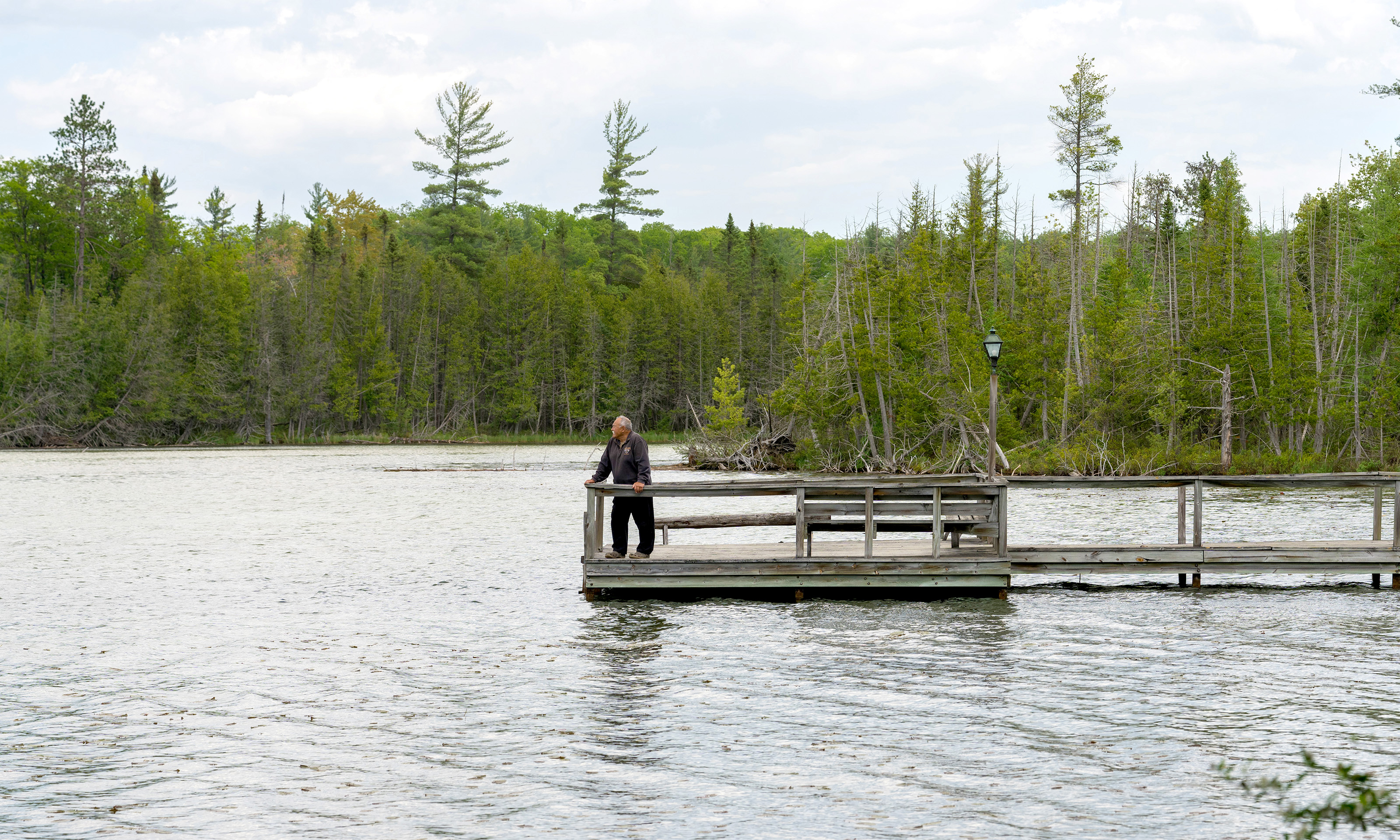
 September 1, 2022
September 1, 2022 By Kelli M. Warshefski
By Kelli M. Warshefski

